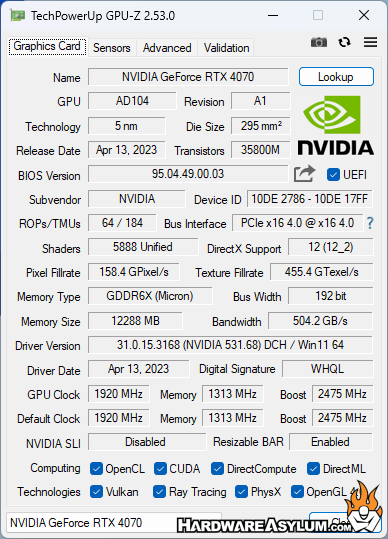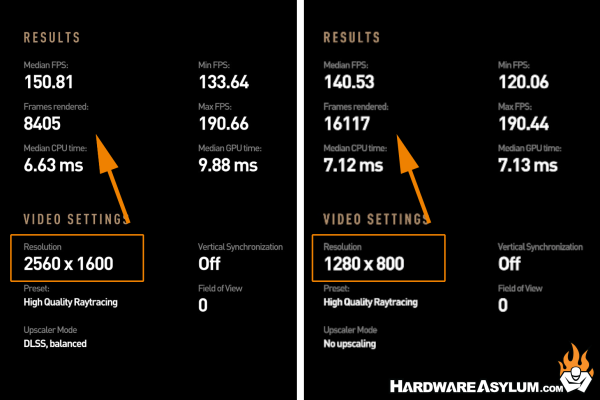NVIDIA RTX 4070 Video Card Review
Author: Dennis GarciaBenchmark Configuration
EVGA Z790 Dark Kingpin – Z790 Chipset
Intel Core i9 13900k (3.0Ghz) Twenty Four Core 8+16 48KB L2 Cache 12+12 x 2MB L3 Cache 36MB
Cooler Master MasterLiquid PL360 Flux
2x Crucial PC5-5600 16GB DDR5 (46-45-45-90)
Patriot P200 512GB SSD
HP dvd1260i Multiformat 24x Writer
Thermaltake Toughpower Grand 1050 Watt PSU
Windows 11 Pro 64bit
Drivers
NVIDIA RTX 4070 (531.68)
NVIDIA RTX 3080 Ti (466.54)
NVIDIA RTX 3070 Ti (466.61)

Framerates were captured using the included benchmarking software and captured game data. The settings used for each test will be listed on the individual benchmarking page with the average framerate recorded in the charts. When possible, only the GPU scores are recorded giving the best opportunity for repeatable results.
The purpose of our benchmark suite is to provide the readers with a comparative analysis of video card performance based on a common set of variables. This may not always reflect a real "in-game" experience or framerates, since those are almost impossible to replicate, but instead is designed to provide an accurate scale of performance of one video card to another given their default setting.
I also want to mention that very few of these benchmarks focus on Ray Tracing or DLSS. Much like with PhysX it is just a technology that will only run on a certain hardware platform. In this case Ray Tracing and DLSS will only run on RTX video cards and need to be enabled in a few select games and benchmarks to work properly.
I am a big fan of the performance gains from RTX but to be honest it is very difficult to discern an RTX feature in games. RTX isn’t like PhysX where you could easily tell when a PhysX feature was enabled as they are currently focused on shadows, reflections, lighting and the antialiasing of the scene. If the game developer does a good job, these features become increasingly difficult to spot. This is a good thing and we can see how RTX features are simply improving on that.
In Dying Light 2 there are a number of RTX specific features that not only increase performance but also allow you to tweak and tune your game to match your hardware. I was noticing that there was an Upscale feature in the settings with a slider that would change the percentage. On the surface this seemed like a way to render the game out at a lower resolution and then use RTX and AI to scale the frame up to match the target you were looking for.
So, I tested it out and here is a side by side.

- On the left we have the built in benchmark running at 2560x1600 with DLSS Balanced enabled.
- On the right we have the built in benchmark running at 1280x800 (exactly half the resolution) running “raw” without any enhancement.
As you can see by the results, the average framerate and MaxFPS are nearly identical along with the number of rendered frames being exactly double. Given there is some post processing we can also see that the Median GPU time increases slightly.

